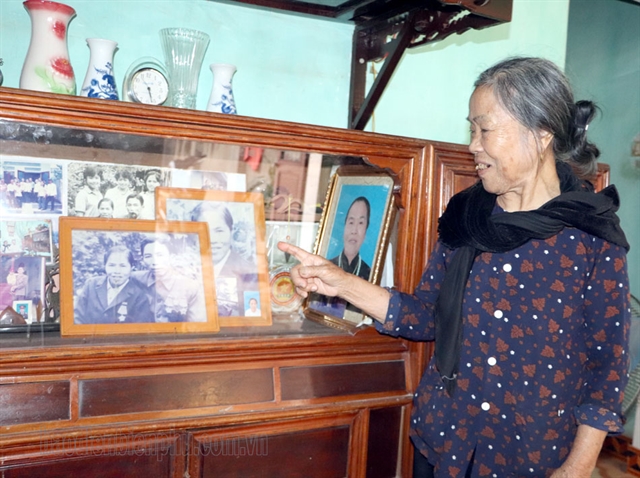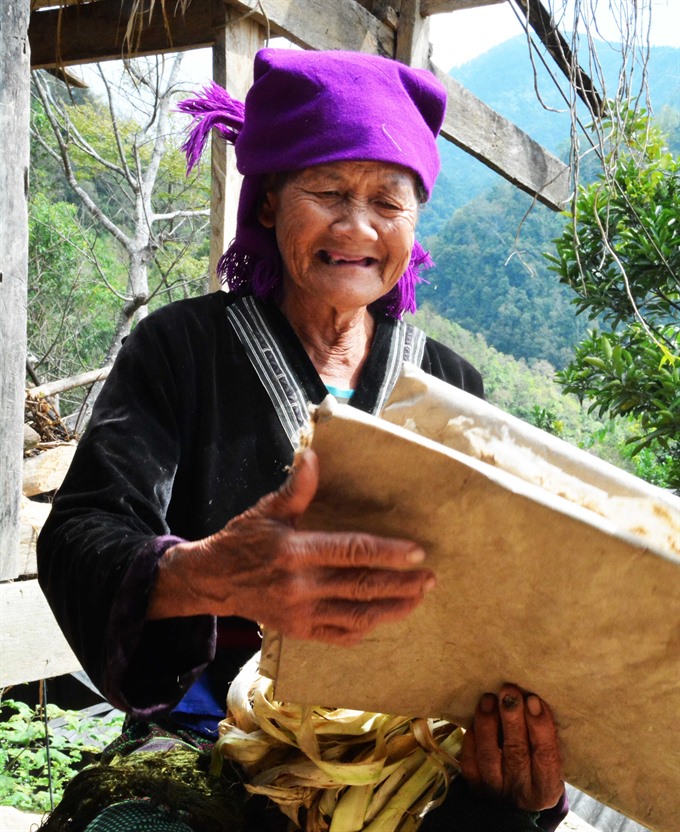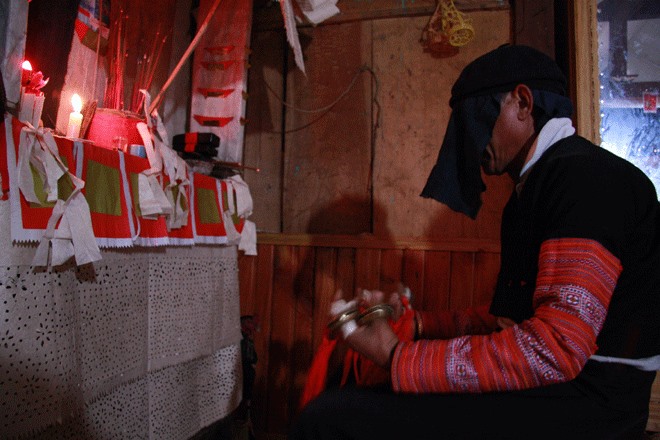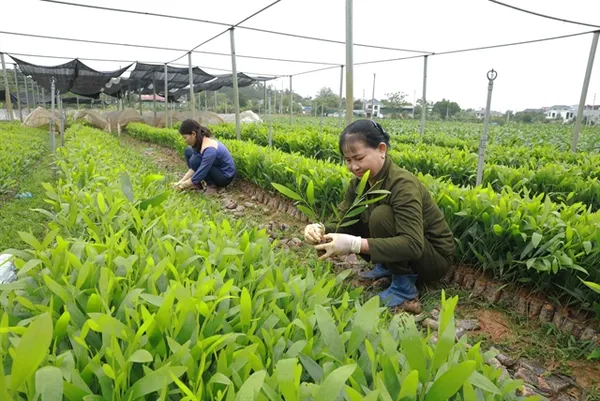 Features
Features

The Mông ethnic minority use poonah paper as an important part of their spiritual life. However, the craft is at risk of disappearing entirely.
 |
| Age-old: Most dó paper makers in Điện Biên are now elderly. Fewer and fewer local young people have taken up their ancestor’s craft. VNA/VNS Photo Văn Dũng |
by Võ Văn Dũng
Poonah paper is used by Mông ethnic people on special occasions like death anniversaries, the New Year Festival and other ritual ceremonies.
To this ethnic minority, poonah (dó in Vietnamese) is not a normal kind of paper but, moreover, a means of connection between the living and the dead and a way to remind children of their roots.
Despite its crucial role in spiritual life, the poonah paper trade of the Mông in the northwestern province of Điện Biên is disappearing.
Poonah paper is made from a variety of trees. The Mông people in Tủa Chùa District often made the paper from trees with green bark like bamboo.
Giàng Thị Dung, a resident of Nà Sa Village in Tả Phìn Commune, still regularly visits the forest to find suitable soft bamboo trees to prepare pulp even though she is 80 years old.
Making the paper since she was 15 years old, Dung says that not everyone could find the proper trees for paper pulp, which grow in deep forests.
According to the craftswoman, after cutting the trees in the forests, a worker will carefully peel off the bark, then use a knife to get rid of the rough outer layer before rolling the bark into balls and simmering it in water and wood ash.
The bark, after being softened, will be fished out and soaked in water for a few days. The maker will then thrash it into mixture which will be poured into water again and stirred to create a mixture of wood pulp.
Next, the maker filters the mixture with cloth to get rid of the dirt and deposit the pulp.
To turn the wood pulp into paper, wooden frames have to be prepared beforehand and the size of the frames depends on the demand, but they usually have rectangular shape. A thin cloth is stretched on the surface of the frame and clipped with four steady wooden bars.
After that, the maker pours water over the pulp and slowly spread the mixture onto the cloth on the frame then rolls it flat. The water will then leak through the cloth, leaving the pulp adhered on the surface.
Next, the frames will be dried and become a large sheet of paper. At that time, the maker will carefully separate the paper from the frame.
42953438PM.jpg) |
| Hard work: The bark is beaten to a pulp after being soaked with water. VNA/VNS Photo Văn Dũng |
 |
| Crucial craft: The paper mould is dried for a few days to create a piece of dó paper. VNA/VNS Photo Văn Dũng |
 |
| Precious paper: Dó paper is used to decorate the altars of Mông people in Điện Biên Province. It is considered a connection between the living and the dead. Photo songmoi.vn |
Dung says it takes about three to four days to finish a batch of poonah paper.
“Even though the work is strenuous and time consuming, the villagers still have to do it to prepare the paper on festive occasions, weddings or death anniversaries, she says.
“I usually help my children, relatives and neighbours to make the paper. I wish to pass the skills to my descendants to preserve the traditional trade of my ancestors.
“However, young people nowadays do not want to learn the craft as it takes a lot of effort and is not very profitable.”
Making poonah paper used to be the traditional craft of Nà Sa Village, where every villager was capable of doing the work.
During the Lunar New Year Festival, the Mông people use the paper to decorate their altars and houses. To families of sorcerers, it is also used to decorate special altars which are used to conduct spiritual ceremonies. The paper is also cut into small pieces to make votive papers during the sacrificial ceremonies.
Particularly, visitors to a Mông family will notice pieces of paper that have been cut into different shapes, each of which is attached to a few chicken feathers and hung on the walls by the altars. Called Xử Ca, such pieces wish for the ancestors’ protection of the family members.
According to Mùa Thị Mày, a cadre of the administration of Nà Sa Village, poonah paper holds a special spiritual value to the Mông and is normally used in their ritual ceremonies. However, nowadays, there are only a few people left in the village carrying on the craft.
“Fewer and fewer villagers have maintained the traditional craft because they have replaced poonah paper with other kinds of paper available in the market. Only five villagers are now still carrying on the craft,” she says.
According to Lê Đình Hải, a senior researcher at Điện Biên Province’s Museum, the traditional craft of making poonah paper of the Mông in Điện Biên is on the verge of fading away.
“Many local artisans are getting old while young people are no longer interested in the craft.”
However, it is crucial to preserve the traditional craft and the cultural values which have been closely associated with the spiritual life of the Mông, preventing it from oblivion, he adds. VNS









